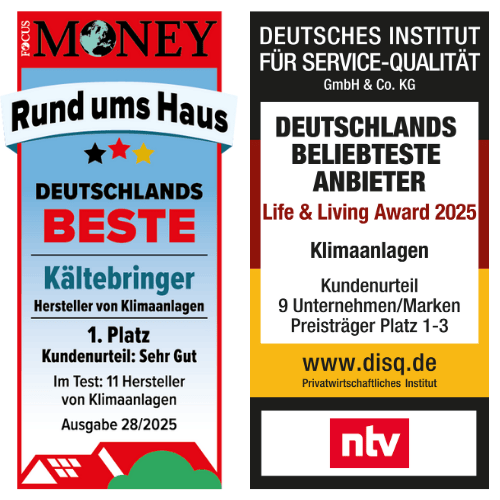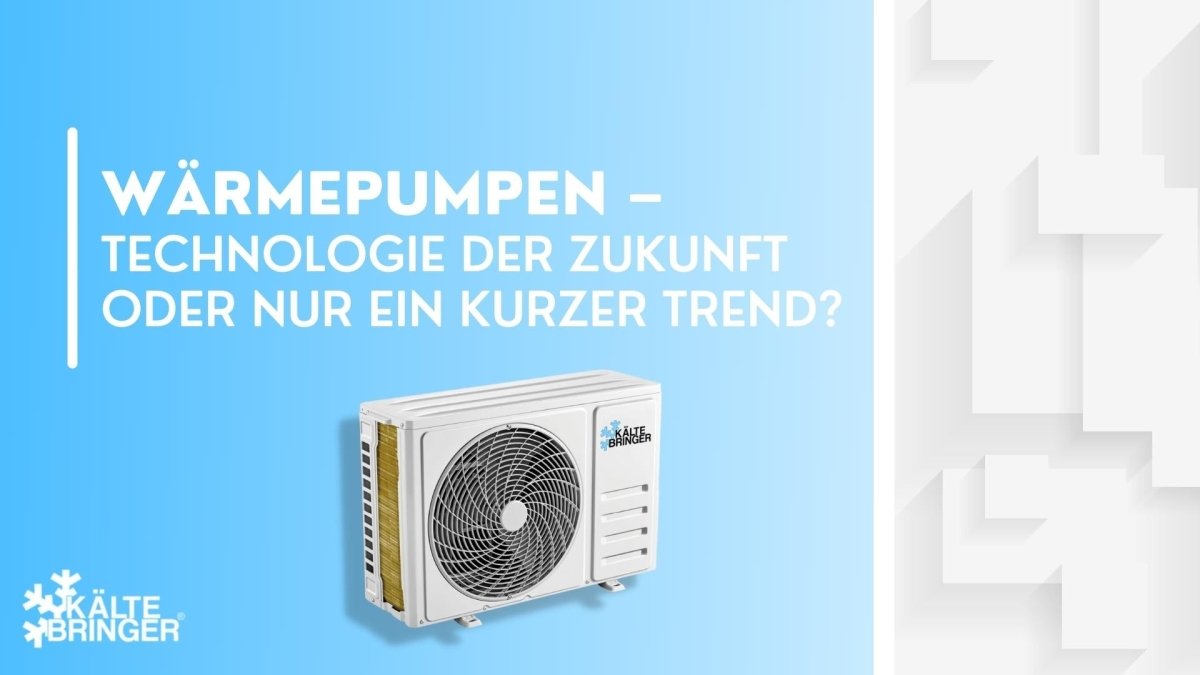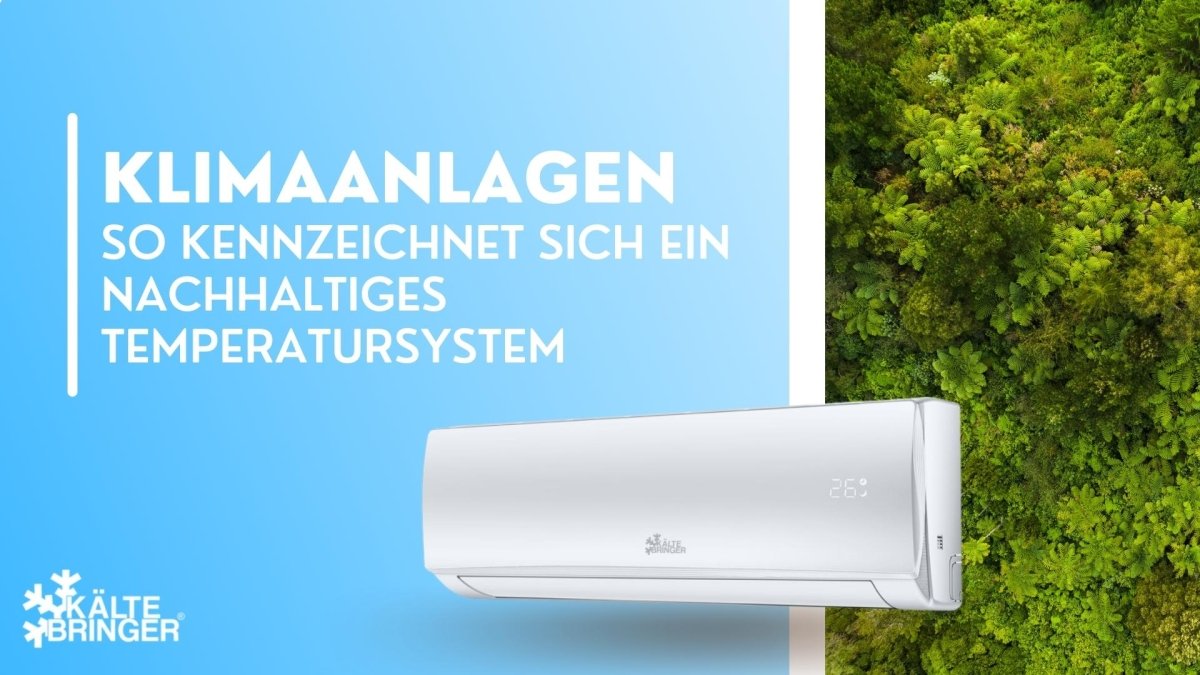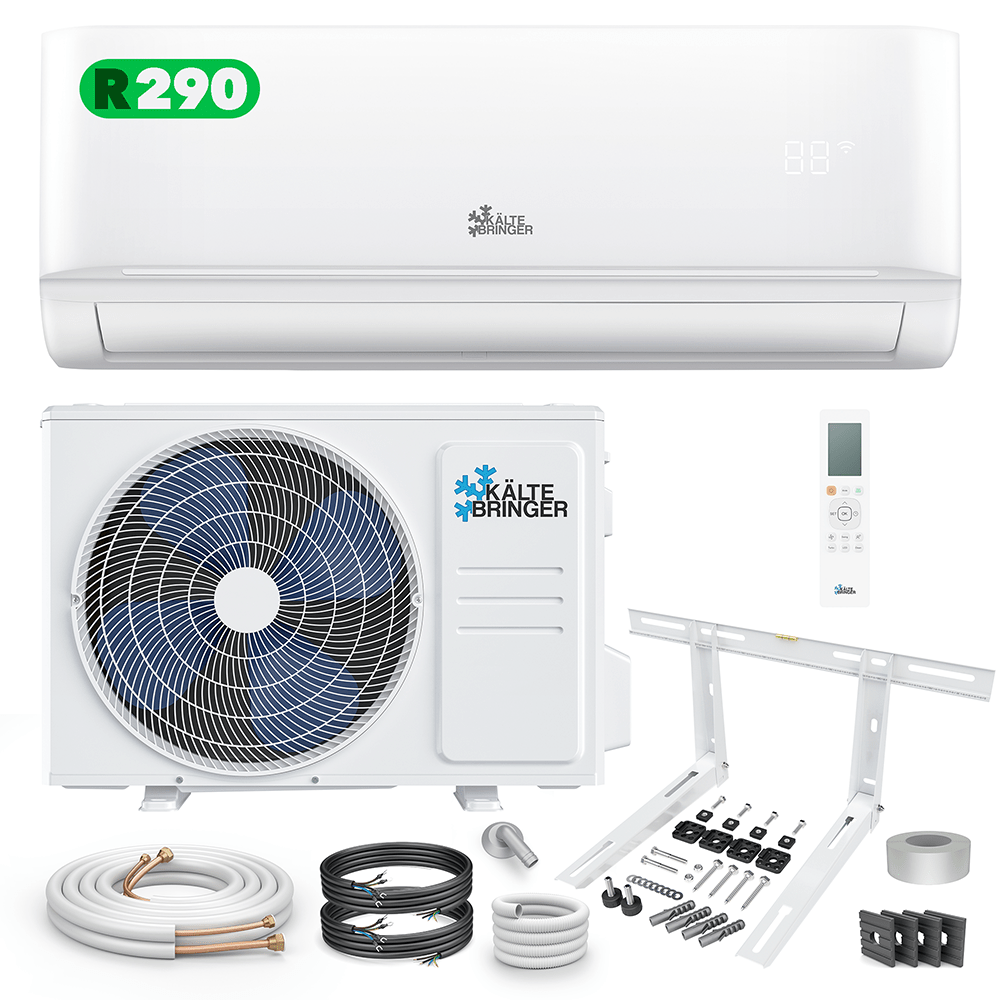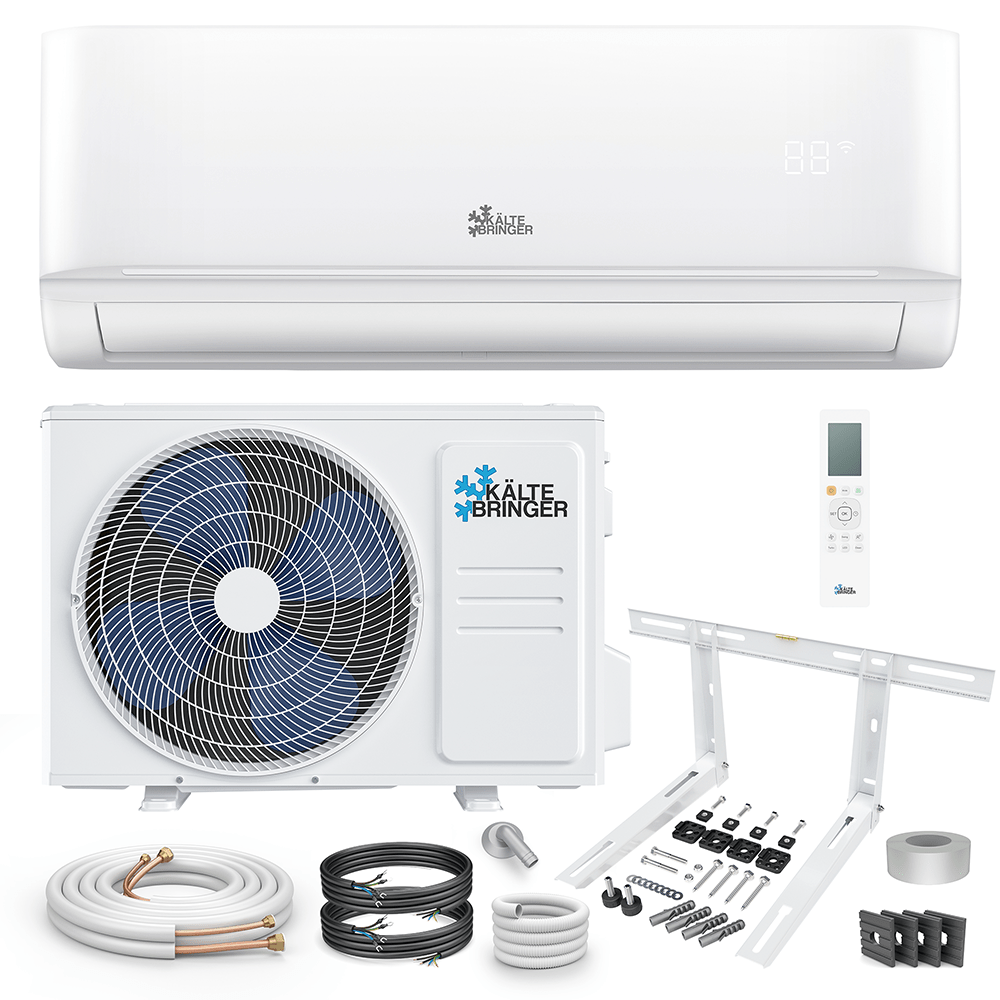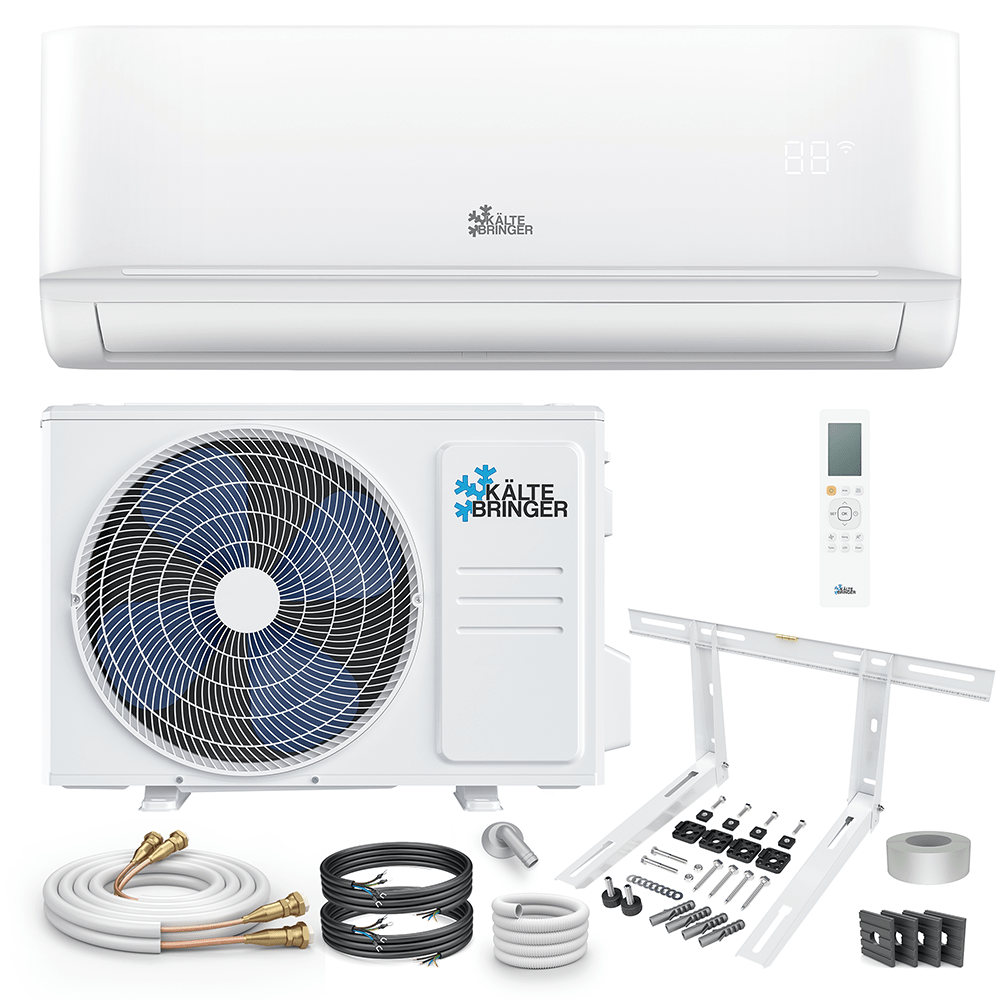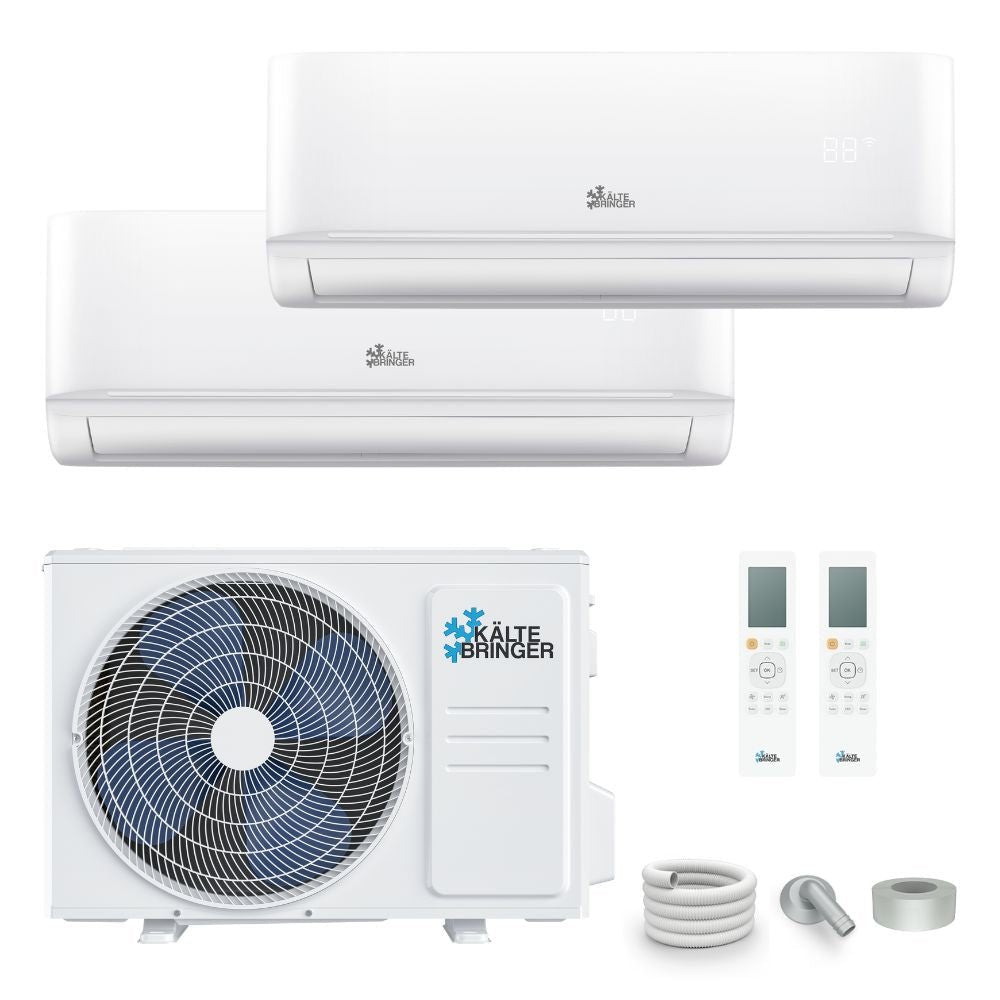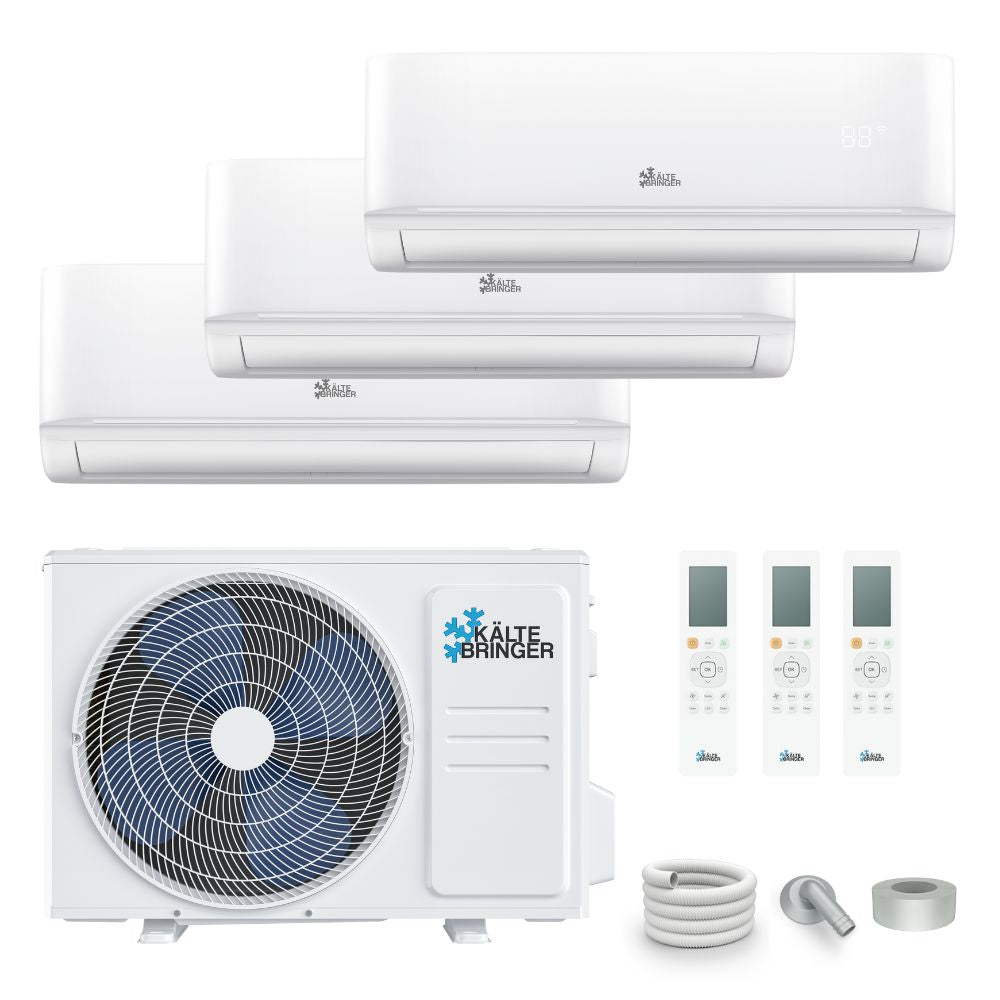Due to rising heating costs and ever warmer summers, the principle of the heat pump is also becoming more and more attractive in Europe. Many people who are currently planning to build a house, include the purchase of a heat pump in their calculations, as it is one of the most environmentally friendly ways to heat a house. But did you know that a heat pump can also be used for cooling? This and much more information about the modern way of temperature adjustment can be found in this article!
Function of the heat pump simply explained
The principle of a heat pump can be compared to that of a refrigerator: it extracts the heat from its surroundings in order to use it for heating. In order to create a clearly noticeable effect, the heat obtained is brought to a higher level by compression and then distributed in the house with a heat distribution system (e.g. pipes or radiators). A heat pump can not only process ambient heat from the air, but also convert the temperature contained in the water or earth, depending on the design and area of application. A heat pump always consists of several components: an outdoor unit, similar to that of an air conditioning system , an indoor unit, the compressor technology and the coolant so that the heat pump can also be used as an air conditioning unit.
There are different types of heat pumps, each of which can convert a different type of heat and use it for heating or cooling. There are: air-to-air heat pumps, groundwater heat pumps, brine-to-water heat pumps and also air-to-water heat pumps. The two most common models are air-to-water heat pumps and air-to-air heat pumps.
Air-water energy pumps use the ambient air as an energy source, they suck in air and use it to heat the water in the heating pipes. The big advantage of this variant is the compact design and easy installation. It is particularly suitable when you want to replace the heating in an existing building, but is also often used in new buildings.
Just like the model mentioned above, air-to-air heat pumps use the ambient air to heat or cool a room. The only difference: here the water of a heating circuit is not heated, but the air directly. With the help of refrigerants, this type of heat pump can also be used as an air conditioner , as is the case in all Kaltbringer models.
What are the advantages and disadvantages of heat pumps?
We would like to explain the advantages and disadvantages of heat pumps using a Kältebringer split air conditioner , as it uses the technology for both heating and cooling.
Probably the greatest advantage of a heat pump is its energy efficiency and environmentally friendly operation. Here is an example: A split air-conditioning system from Kältebringer converts an energy supply of 1 kWh into an effective cooling capacity of 6.1 kWh. So it has a SEER value of over 6, which is more than good in an international comparison. In comparison to gas heating, a heat pump consumes 195 kg less CO2 on average over the year. If green electricity is also used to operate an air conditioning system, emissions can be reduced to 0 kg. So if you use an air conditioning system with heat pump technology, you are opting for the most environmentally friendly way of heating. In addition, the heat pump technology is very little susceptible to defects and repairs. If the regular service appointments are kept, there are hardly any components that can break. The only disadvantage of a heat pump is that it cannot be easily installed in every building. Installation is often not possible, especially in old residential buildings or those that are listed buildings. It is also often not an option for residents of rented apartments if the landlord does not decide to equip the house completely with it. However, those who are able to use an air conditioning system with a heat pump will save a lot of costs in the future.
How much does a heat pump cost?
The cost of purchasing a heat pump depends heavily on the size of the room to be heated/cooled. If you opt for an air conditioner that uses heat pump technology, the cost for a room up to 55 square meters is only around 620 euros. There are also hardly any maintenance costs for many devices, for example, the air conditioners from Kältebringer largely clean themselves, and it is also not necessary to top up the coolant. No other raw materials are required for operation, as is the case with conventional oil heating. Only electricity costs are incurred, which can be further reduced, for example, by having your own photovoltaic system. In the long term, an air conditioning system with a heat pump is a successful alternative, especially in times of rising raw material prices!
How much electricity does a heat pump use?
Compared to gas heating, the heat pump converts the energy fed into it into heat or cold much more efficiently. From 10 kWh of electricity, an air conditioner can already generate 41 kWh of heat output, while a gas fired heater under the same conditions only converts 7 kWh into real heat. When cooling, the performance is even better: from 1 kWh of supplied energy, the cold bringer air conditioner generates a total of 6 kWh of cooling performance. The annual power consumption of an air conditioner for cooling is around 200 kWh, so it is manageable. The significantly higher power consumption is caused if you use the device in the cold season in addition to heating. The annual power consumption here is around 980 kWh.
But what does that mean in terms of costs? If you factor in the current electricity price of 38 cents, the annual costs for air conditioning an area of 55 square meters are only 76 euros, plus the acquisition costs of around 600 euros for an air conditioner from Kältebringer. If you also want to use your air conditioning as a heater on cold days, you have to calculate around 370 euros for the area mentioned. That may sound like a lot at first, but this investment pays off after just a few years due to the constantly rising raw material prices. You should definitely clarify in advance whether and what type of air conditioning system is suitable for you.
Heat pump technology is still very young, i.e. only at the beginning of its development. It is the most environmentally friendly way of heating a building that has ever been developed, even though development is still in its infancy. A cheap air conditioner with a heat pump, such as the model from Kältebringer, only costs around 620 euros to buy, plus there are only the electricity costs during the term, the investment pays for itself very quickly. The additional low effort for maintenance and cleaning make the heat pump a technology for the future that has not yet reached its peak.

